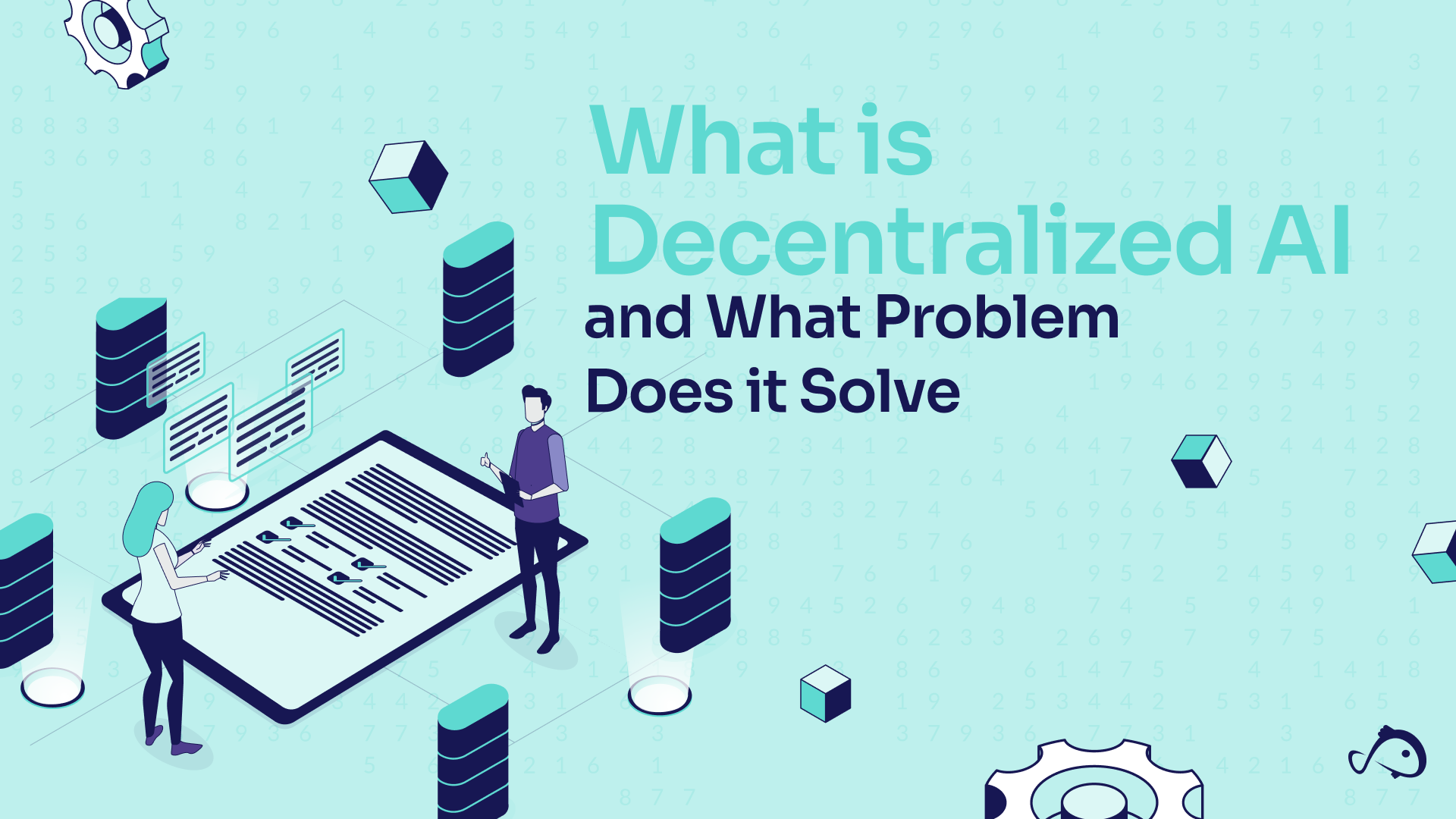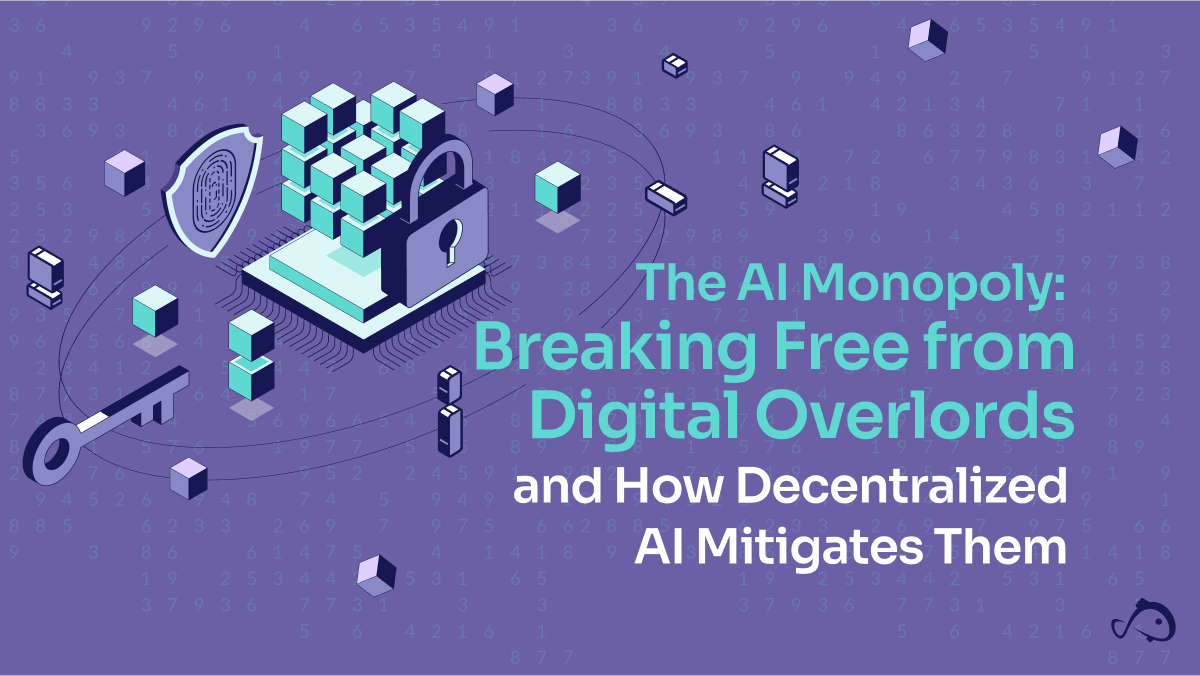Imagine: Your toaster knows you better than your therapist. Your car negotiates with your house to optimize energy. Your phone anticipates needs before you’re aware. Science fiction? No—it’s AI’s promise. Are we forging tools of unprecedented freedom, or crafting our own digital shackles?
This question lies at the heart of a new paradigm emerging in artificial intelligence: decentralized AI. Closely tied to DePINs (Decentralized Physical Infrastructure Networks), this approach promises to revolutionize how we develop, deploy, and interact with AI technologies.
The AI Boom and Its Limitations
The recent surge in AI capabilities has led to unprecedented growth in the tech sector, exemplified by NVIDIA reporting $30 billion in revenue for the second quarter of 2024, an increase of 122% from a year ago. However, this rapid expansion of AI and the increasing focus on infrastructure reveal significant limitations of centralized AI:
- Data Monopolies: A handful of tech giants control vast amounts of data, raising privacy concerns.
- Scalability Challenges: As AI models grow more complex, resources become increasingly centralized.
- Lack of Transparency: Many AI systems operate as “black boxes,” hindering auditability.
- Single Points of Failure: Centralized AI systems are vulnerable to outages and cyberattacks.
- Data Bottlenecks: Centralization hinders innovation, particularly in edge computing and IoT applications crucial to DePIN.
Decentralized AI: A New Approach
Decentralized AI aims to address these challenges by distributing AI development, training, and deployment across a network of participants. Key components include:
- Distributed Data Storage: Using blockchain and distributed ledger technologies for secure data management.
- Federated Learning: Training AI models on diverse datasets without centralizing data, preserving privacy.
- Decentralized Compute Power: Harnessing computational resources from numerous participants for efficient scaling.
- Open-Source Models: Fostering innovation through collaborative development of AI technologies.
Koii: Pioneering Decentralized AI Infrastructure
At the forefront of this revolution is the Koii Network, which combines several innovative technologies:
- CARP (Compute Attribution and Reputation Protocol): Ensures fair compensation for computational contributions.
- SCALEs (Succinct Curated Acyclic Ledger Extensions): Enable efficient management of large datasets.
- Reputation System: Enhances network security and reliability.
- Social Computing Network: Fosters collaboration while enhancing privacy and security.
Koii’s various partnerships with Orca Compute, Rivalz, Exabits, Synesis One, ZkAGI, and OVioHQ are expanding the possibilities of decentralized AI applications within DePIN.
Real-World Impact of Decentralized AI in DePIN
Several projects building on Koii DePIN technology are already demonstrating the transformative power of decentralized AI. OrcaCompute integrates AI (e.g., Stable Diffusion) into Koii’s network, showcasing decentralized AI in creative and computational tasks.
Impact on Real-World Challenges:
- Decentralized Image Generation: By running AI applications on a decentralized network, OrcaCompute enables the creation of images and other media without relying on centralized servers, reducing bottlenecks and enhancing scalability.
- Democratized Access to AI Tools: OrcaCompute’s approach allows more users, particularly those with consumer-grade hardware, to access advanced AI tools like Stable Diffusion, which were previously limited to those with high-end computational resources.
- Demonstration of Use Case: OrcaCompute illustrates the potential of decentralized AI to democratize access to advanced computational tools, thereby broadening the reach of AI applications to a wider audience.
The Road Ahead: InfraFi and Future Developments
As decentralized AI evolves, new concepts emerge:
- Infrastructure Finance (InfraFi): Combines DeFi and DePIN, revolutionizing AI project funding.
- Koii Protocol Library (KPL) Tokens: New incentives for AI development on a 90,000+ node network.
- Koii-Orca Compute Collaboration: Enhancing liquidity, enabling efficient infrastructure asset trading, and accelerating decentralized AI growth within DePIN.
Conclusion
The possibilities of decentralized AI are as exhilarating as they are uncertain. The power to shape this future lies not just with tech giants or pioneering startups, but with each of us. The question isn’t just “What is decentralized AI?”—it’s “What will you do with it?” And so, why aren’t we demanding it?
Powered by networks like Koii and its partners, decentralized AI could reshape AI development, deployment, and our interactions with technology. By distributing power and access, we’re moving towards broader AI benefits, fostering innovation, and reducing the risks associated with centralized control.
It’s not just theoretical—it’s a practical solution to the challenges posed by centralized systems. Next article: We’ll explore specific centralized AI problems and how decentralized solutions address these within the DePIN framework.

 Financial Pressures Drive Bitcoin Miners to AI: Exploring the Shift to Sustainable Alternatives
Financial Pressures Drive Bitcoin Miners to AI: Exploring the Shift to Sustainable Alternatives